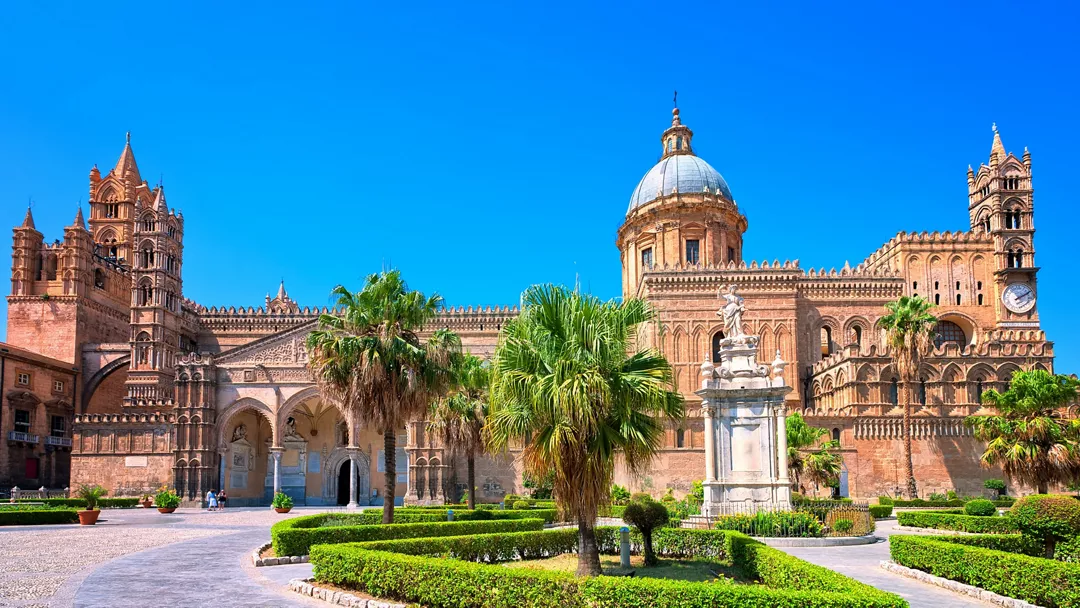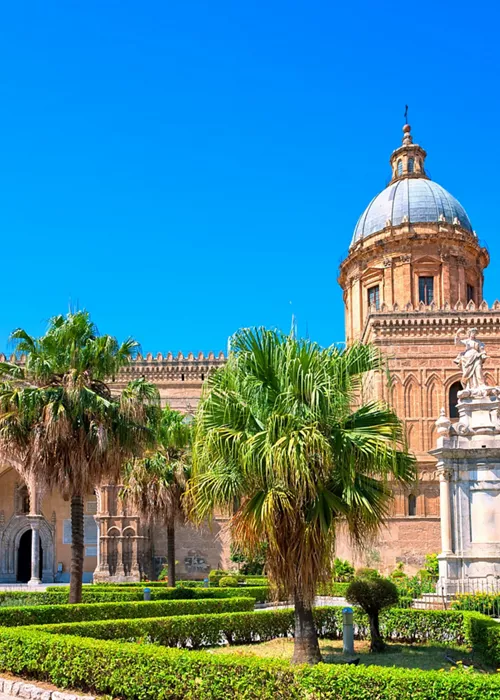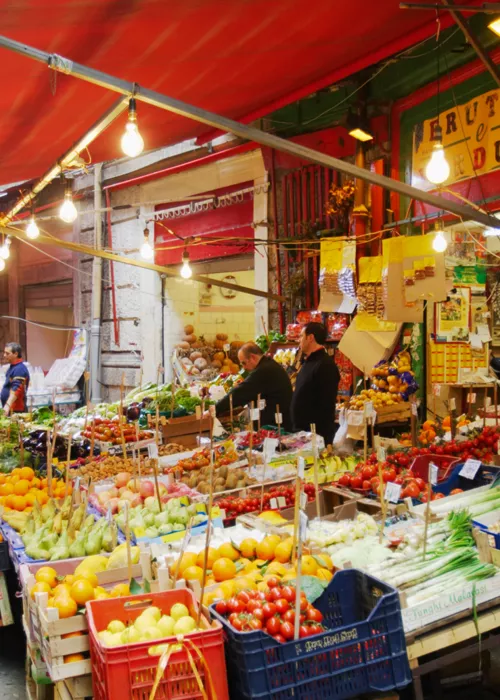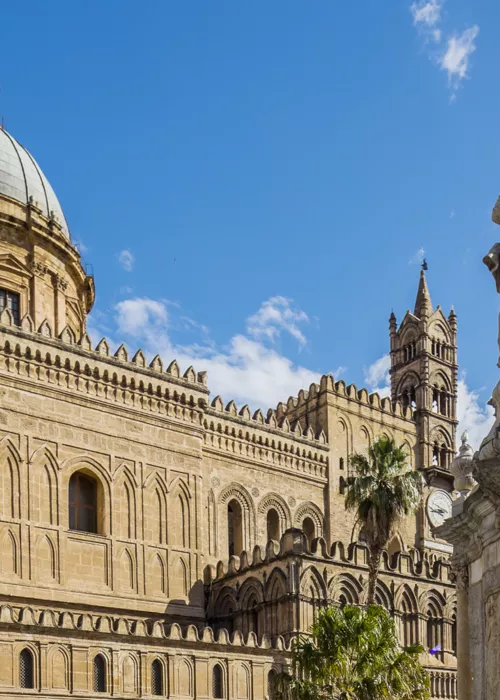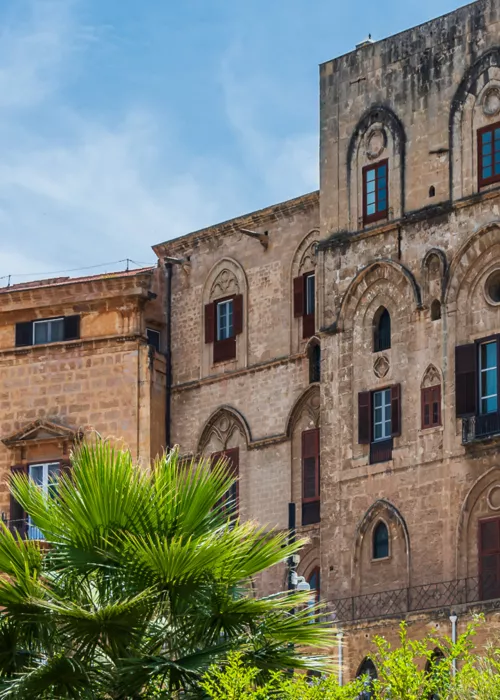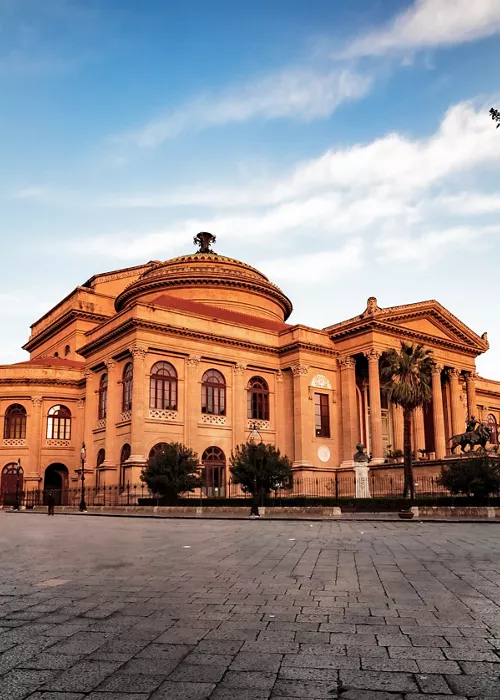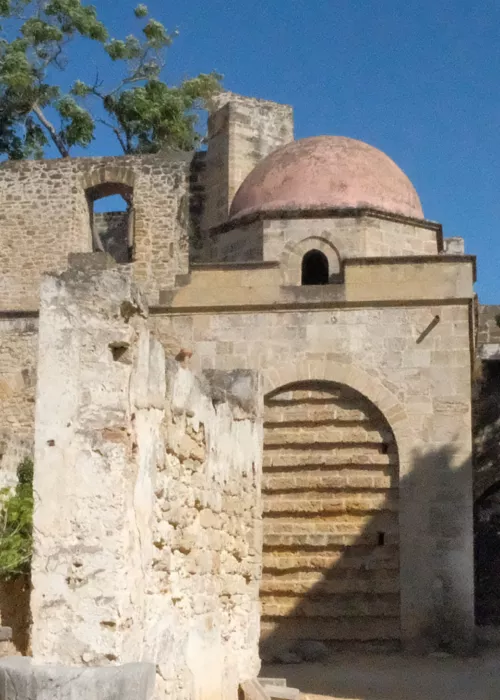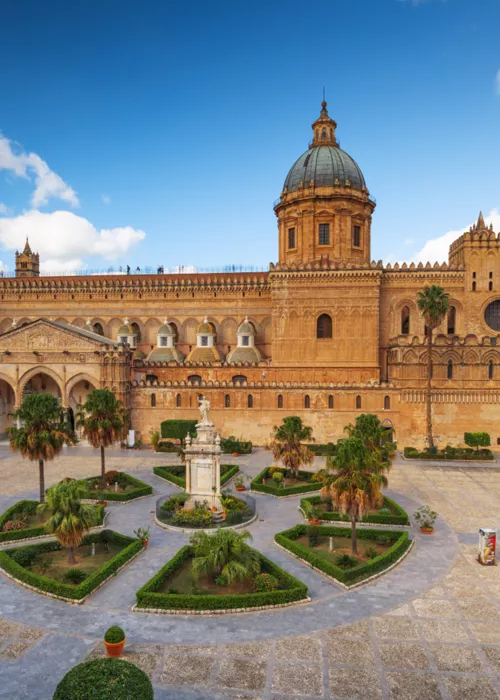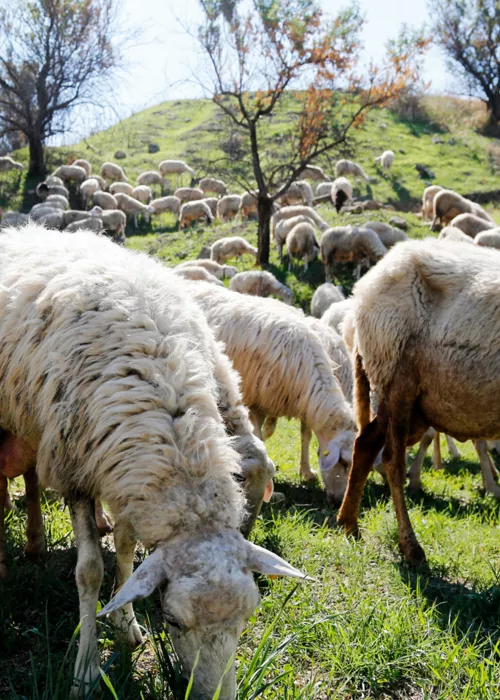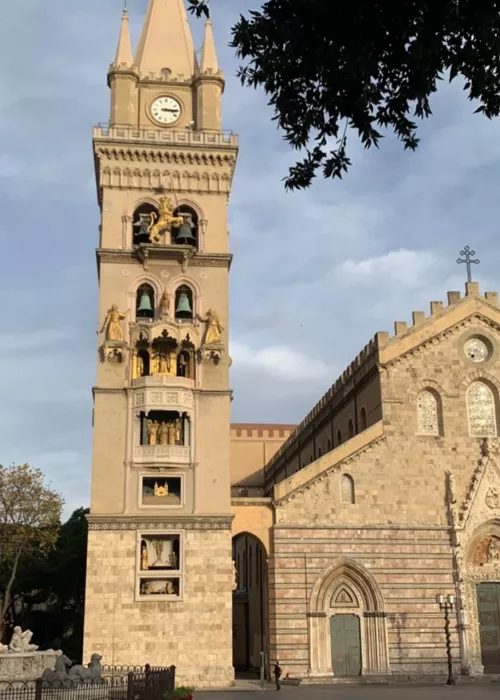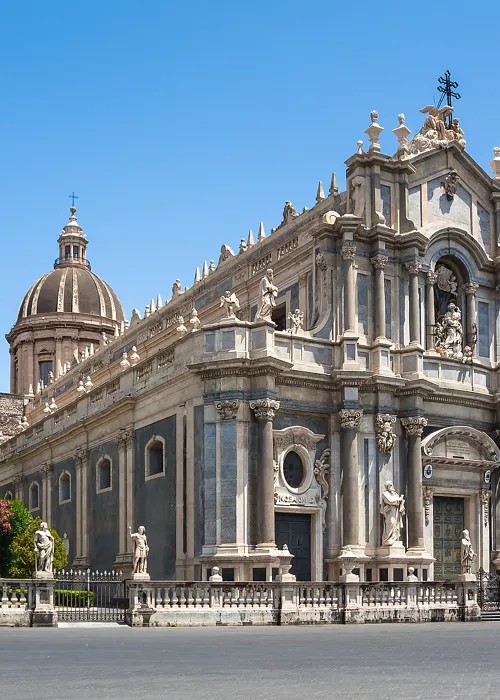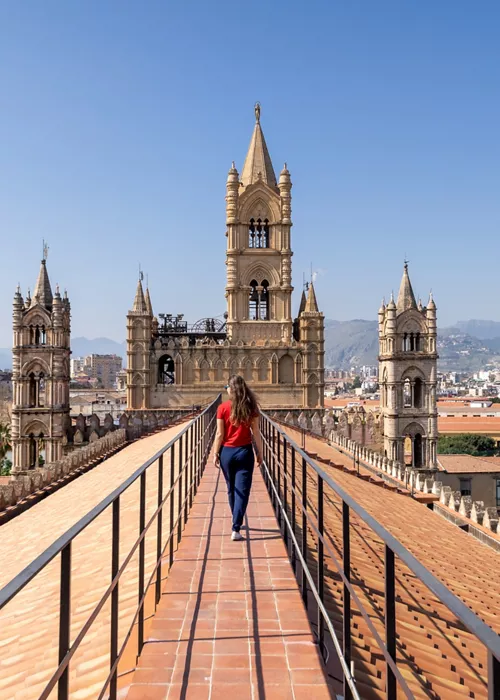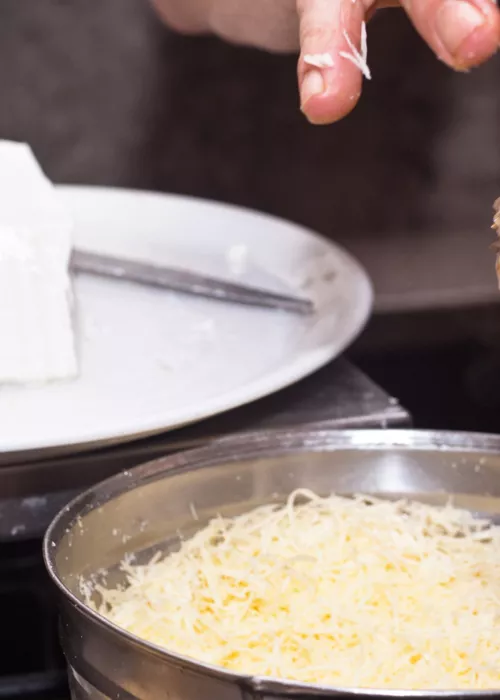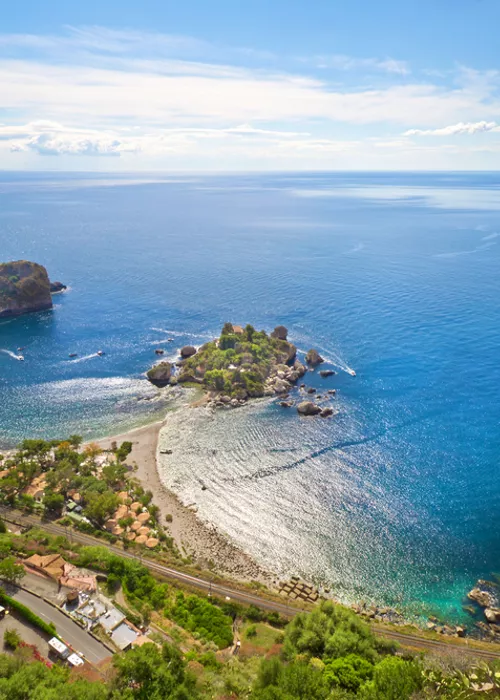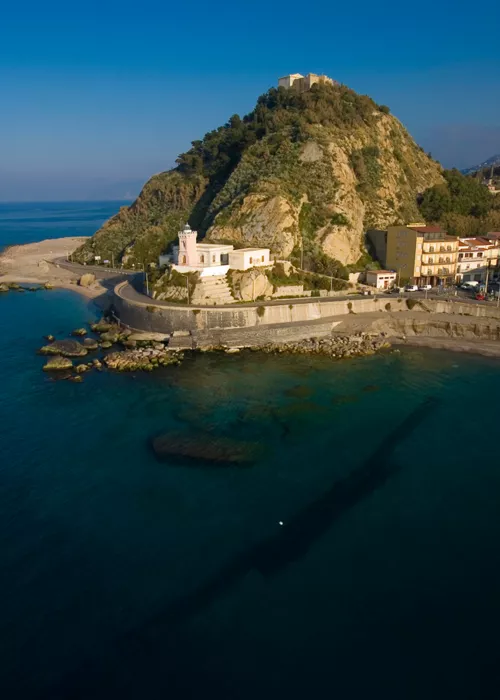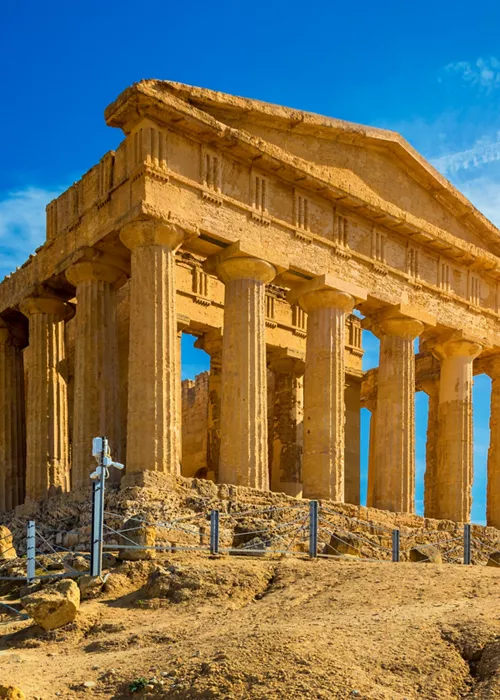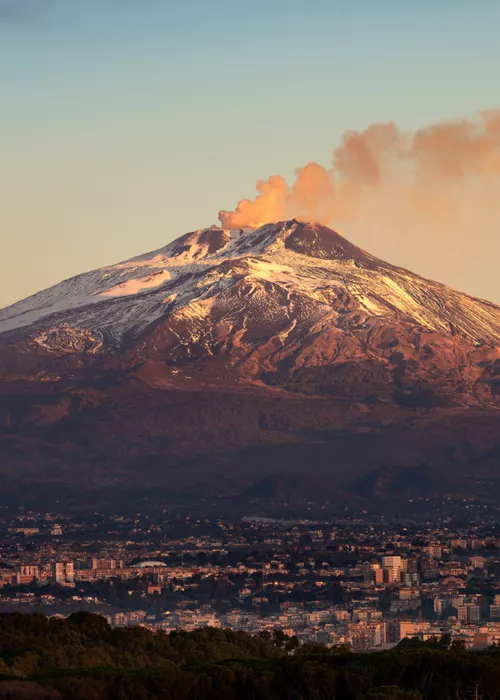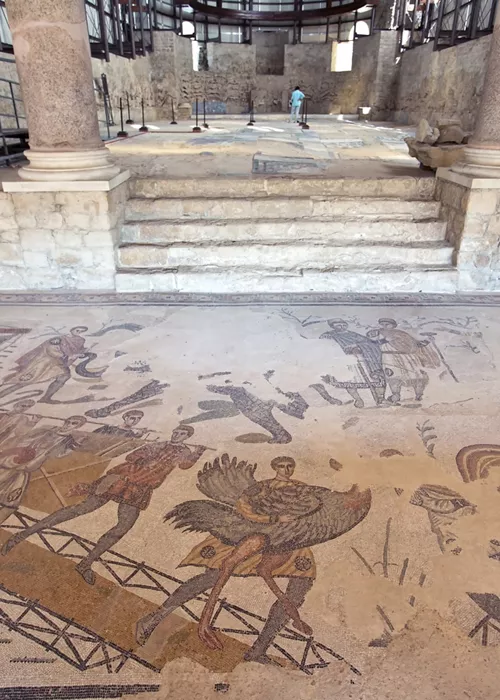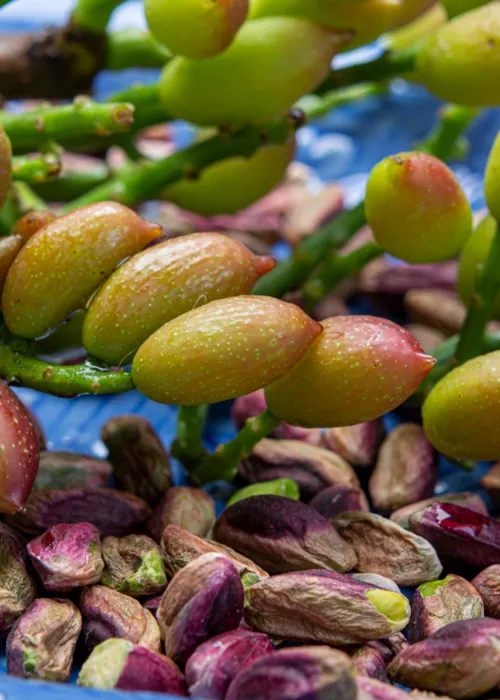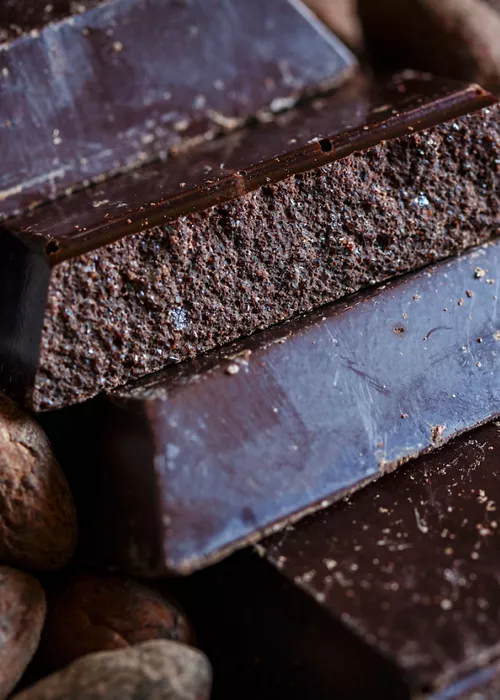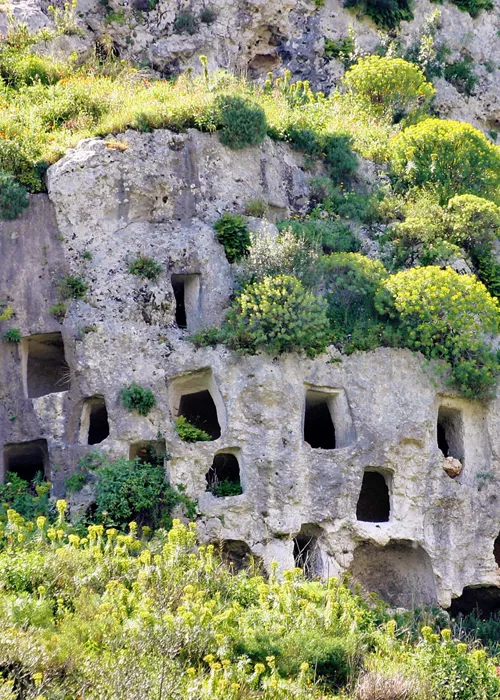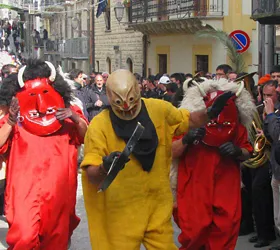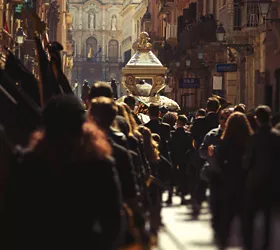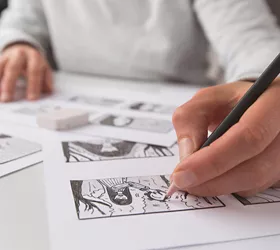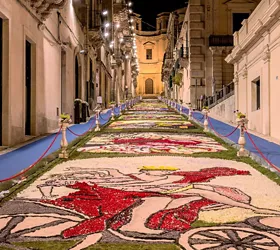Palermo: a precious jewel of the south with rich cultural heritage
5 minutes
A city of Phoenician origins, then ruled by the Romans, the Arabs, the Normans and the Swabians, it displays evidence of its glorious past everywhere you look. Arab and Norman styles blend with Baroque and Art Nouveau in a mix of rare beauty, to be admired with both surprise and wonder. Among the largest in Europe, this coastal metropolis captivates with its colours, scents and flavours that overpower the senses and animate the streets. Decadent and sumptuous, ancient and contemporary, authentic yet bewitching: watch out, Palermo will get into your heart and soul and never leave.
The history and interesting facts about Palermo
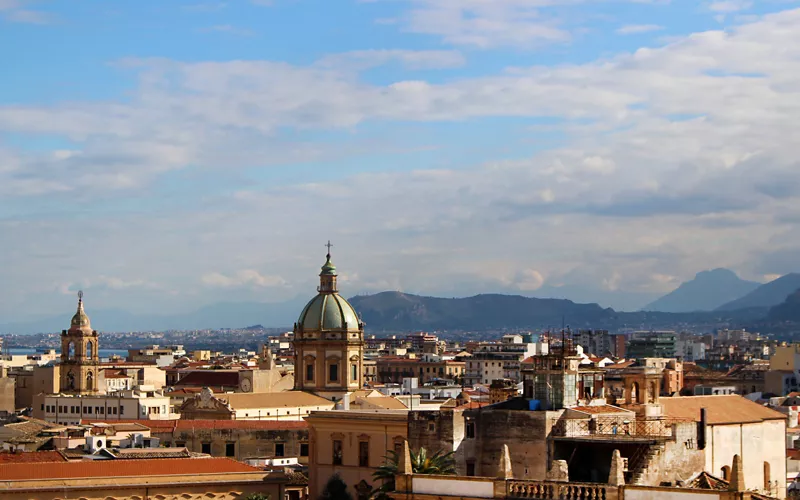
Palermo's history is rich and fascinating, and you only have to take a look around to confirm this. First to occupy the valley where Palermo stands were the Phoenicians who, in the 7th century BC, founded a city there called Zyz. The Greeks tried several times to take possession of this magical place, but only the Romans succeeded during the First Punic War. After the fall of the Roman Empire, Palermo was subject to barbarian invasions at the hands of the Vandals and Ostrogoths until the Byzantine fleets of Belisarius of the Eastern Roman Empire conquered the city in 535 AD, making it the capital of their kingdom in southern Italy.
We owe the decorative art of marble inlays and golden mosaics that embellish Palermo to the Byzantines. In 827 AD, the Arabs arrived in Sicily and built their mosques and grand palaces. The height of its splendour was in 1040: the Norman kings created a pioneering state where different religions and ethnic groups coexisted peacefully. An environment that pleased Frederick II, Emperor of the Holy Roman Empire and grandson of Frederick Barbarossa. In mediaeval Palermo, the Arab-Norman architectural style prevailed, which we can still admire today.
In the 13th century, Charles of Anjou overpowered the son of Frederick II. The Aragonese seized Palermo, as the people who had risen up against the Angevins demanded. From 1494 to 1759 Palermo was ruled by the Viceroys, officials of the King of Spain who were later abolished by the Bourbons who, having settled in Naples, unified the Kingdom of the Two Sicilies and governed Palermo until the arrival of Garibaldi and its annexation to the Kingdom of Italy. It was the period of the great Art Nouveau buildings whose charm, even today, is unsurpassed.
What to see in Palermo: 3 places not to be missed
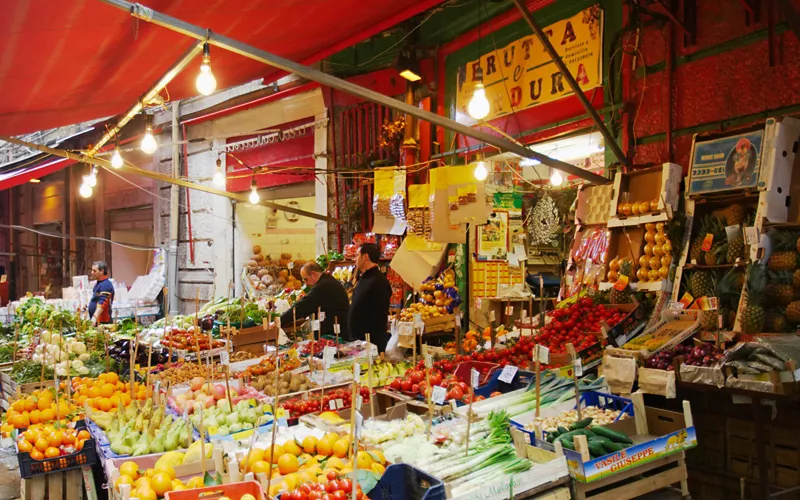
The Byzantine gold of church mosaics, the revelry of the Baroque in the popular quarters, the cheerful commotion in the historic markets of Vuccirìa and Ballarò: what to see in Palermo? There are many alternatives, but we suggest three.
- Abandon yourself to the spiritual side of Palermo with its cathedral: a huge building dedicated to Our Lady of the Assumption that was built on a former Christian basilica, transformed into a mosque by the Saracens and converted to Christian worship by the Normans. Besides its intriguing history, it houses the remains of the Sicilian royals Frederick II and Roger II and those of Saint Rosalia, the patron saint of Palermo.
- Marvel at the magnificence of one of Palermo's iconic monuments: Palazzo dei Normanni, a fortress built by the Arabs in the 9th century and later extended by the Normans. The rooms are adorned with exquisite mosaics depicting scenes of hunting, and the Palatine Chapel is decorated with the most beautiful Byzantine mosaics in all of Sicily.
- Dream in one of Palermo's temples of music: the Teatro Massimo in Palermo, built in 1887 on a location where there were three churches and as many monasteries, and is the subject of a fascinating legend: it seems that one of the nuns whose tomb was destroyed still roams there.
3 tips for things to do in Palermo
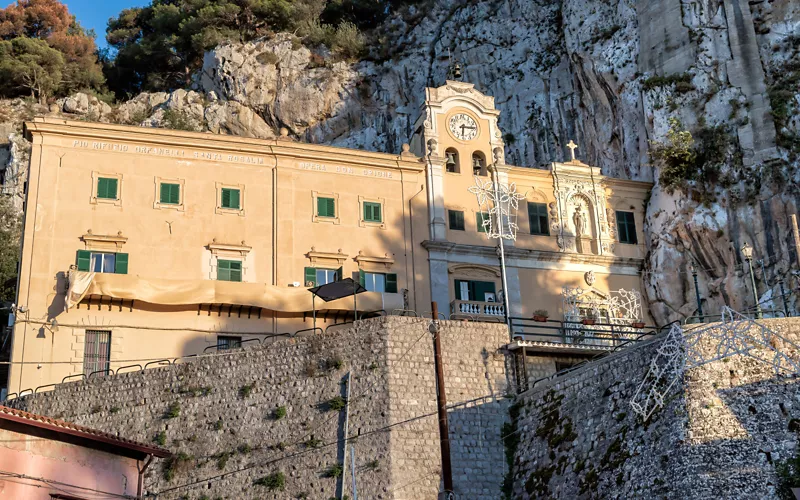
What to do in Palermo among the many alternatives that this beautiful and bold city offers to those who visit it? Start with these three.
First, a trip up to the Sanctuary of Saint Rosalie, a spiritual experience that will also give you a wonderful view of the city. Built in the 17th century on the site of earlier religious buildings, the sanctuary was dedicated to the city's patron saint.
Then a trip to the Mondello beach in Palermo, just 11 km from the city centre. A paradise for those who love the sea life, with fine sand and crystal clear sea, it is considered one of the most beautiful beaches in Palermo.
When you have come this far, you will know what the third thing to do is. A tour by boat, recommended also for those who want to enjoy water sports, to explore the magnificent gulf of Mondello.
What to eat in Palermo: 3 specialities
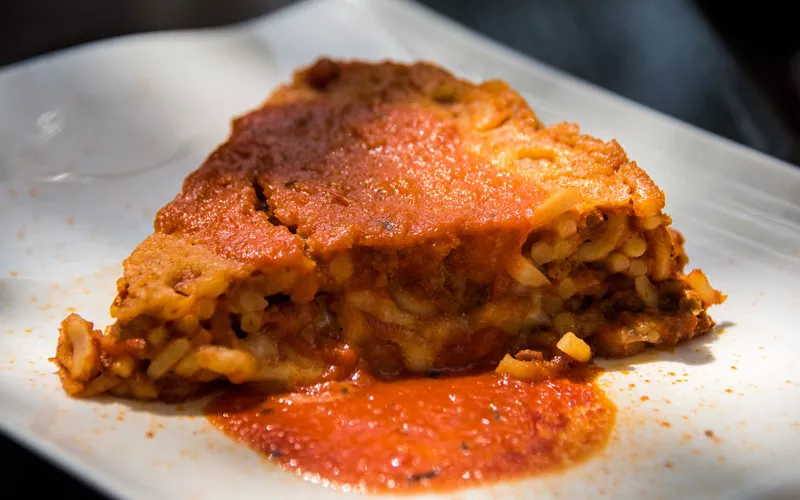
Deciding what to eat in Palermo is both simple and very difficult, because of the variety of Sicilian and Palermo cuisine in particular: it is not without reason that the city enjoys the title of European Capital of Street Food.
- You should not miss out on stigghiola, a traditional dish made from the intestines of lamb. Don't ask how it is made, just taste it and you won't regret it.
- The second staple of Palermo cuisine is the anelletti al forno, which comes in two versions and as many schools of thought: ragout and peas or tomato sauce and aubergines.
- Lastly, the Palermo sfincione, a long, soft pizza with a sauce of onions, Sicilian caciocavallo cheese, breadcrumbs, oregano and anchovies.
But if you had a "little space" left, you could also have arancine, pane e panelle, and crocchè, pani c'a meusa (bread with spleen), cannoli...
Unique places in Palermo
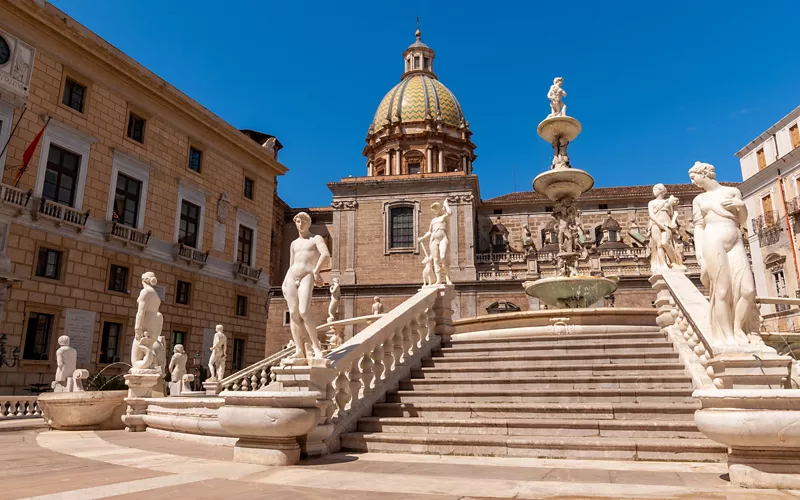
Palermo is full of unusual places, and anyone who has been to this bustling, outspoken city at least once will not be surprised.
Starting with the Pretoria Fountain, made in 1554 by the sculptor Camilliani to decorate a Florentine villa, it was purchased by the Palermo Senate and arrived in Palermo dismantled in 644 pieces. It was reassembled in a different way from the original design.
Don't miss Santa Maria dello Spasimo, an event centre converted out of an unfinished church in the Kalsa district: to watch a show or the stars, as the building has no ceiling, and Palazzo Chiaramonte Steri, built in 1320 by Manfredi I and belonging to the Chiaramonte family, it represented one of the most important families in western Sicily. Nowadays, it is the headquarters of the Rectorate of the University of Palermo.

